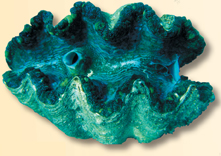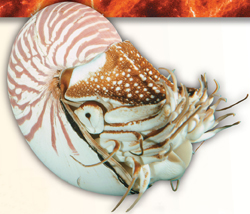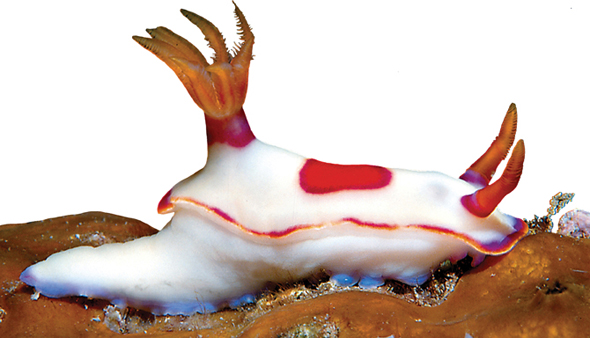Mollusks are traditionally divided into several classes based on characteristics of the foot and the shell; specialists estimate that there are somewhere between 50,000 and 200,000 species of mollusks alive today.

Giant Clam
BIVALVIA: Bivalves
Bivalves are aquatic. They have a two-part hinged shell and a wedge-shaped foot. They are mostly stationary as adults. Some burrow in mud or sand; others attach to rocks. Most are filter feeders that use gill siphons to take in water that carries food. Clams have open circulatory systems. Bivalves have the simplest nervous systems among mollusks. Examples: clams, oysters, scallops, mussels

Garden Snail
GASTROPODA: Gastropods
There are both terrestrial and aquatic gastropods. Most have a single spiral, chambered shell. Gastropods use a broad, muscular foot to move and have a distinct head region. Snails and slugs feed with a structure called a radula that usually works like sandpaper. Some species are predators whose harpoon-shaped radula carries deadly venom. They have open circulatory systems. Many gastropod species are cross-fertilizing hermaphrodites. Examples: snails, slugs, nudibranchs, sea hares

Chambered Nautilus
CEPHALOPODA: Cephalopods
Cephalopods live in salt water. The cephalopod has a highly developed brain and sense organs. The head is attached to a single foot, which is divided into tentacles. They have closed circulatory systems. Octopi use beaklike jaws for feeding; a few are venomous. Cephalopods have the most complex nervous systems among mollusks; octopi have complex behavior and have shown the ability to learn in laboratory settings. Examples: octopi, squids, nautilus, cuttlefish

Nudibranchs, such as this Hypseiodoris species, are marine gastropods without shells. They breathe through gills (the orange structures) on their backs.
Table of Contents
- Formulas and Equations
- Applying Formulas and Equations
- Mean, Median, and Mode
- Estimation
- Using Measurements in Calculations
- Effects of Measurement Errors
- Accuracy
- Precision
- Comparing Accuracy and Precision
- Significant Figures
- Calculating With Significant Figures
- Scientific Notation
- Calculating With Scientific Notation
- Dimensional Analysis
- Applying Dimensional Analysis




